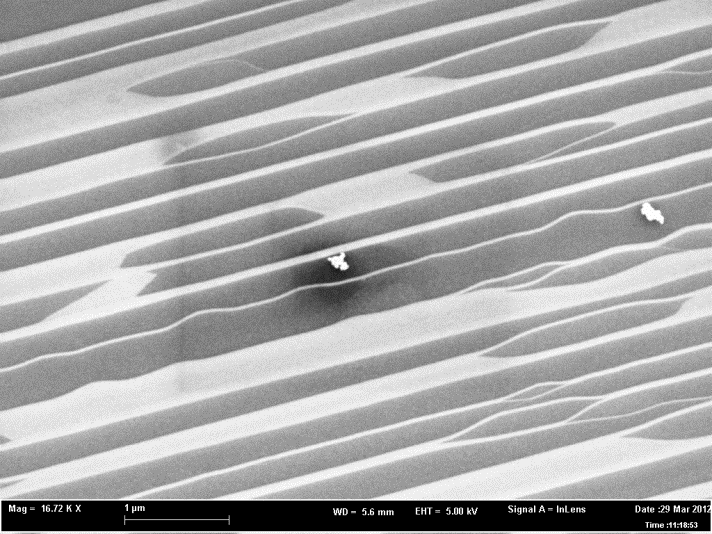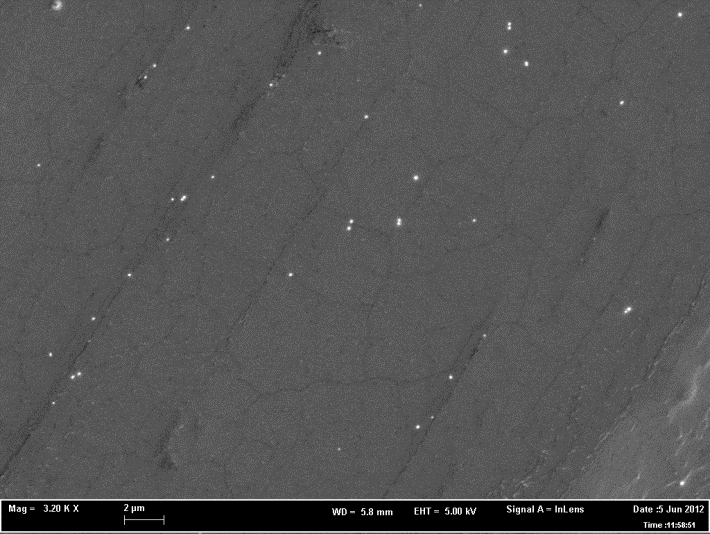Vocabulary
Graphene
What is it?
From a structural point of view, graphene is a monoatomic graphite layer (bidimensional material): carbon atoms are arranged in hexagonal cells to form a beehive grid. It is the thinnest material known to man, given that it is only one layer of atoms "thick" (a million times thinner that a human hair!), the most resistant material discovered to this day (100-300 times more resistant than steel), the lightest material known (a square meter would weigh 0.77 milligrams!) and the most flexible too.
How is it produced?
Graphene is typically produced either by mechanical and chemical exfoliation of graphite or in high temperature reactors (e.g. CVD) on different support substrates, both metals and semiconductors.
What can it be used for?
Graphene is a nanomaterial with innovative properties with a considerable impact and very high expectations in terms of applications in different sectors (see EU's Flagship “Graphene”).

SEM image of graphene grown on SiC: the darker areas are graphene terraces.

SEM image of graphene grown on copper: the entire surface is covered by a monolayer of material. (CNI-IIT production)